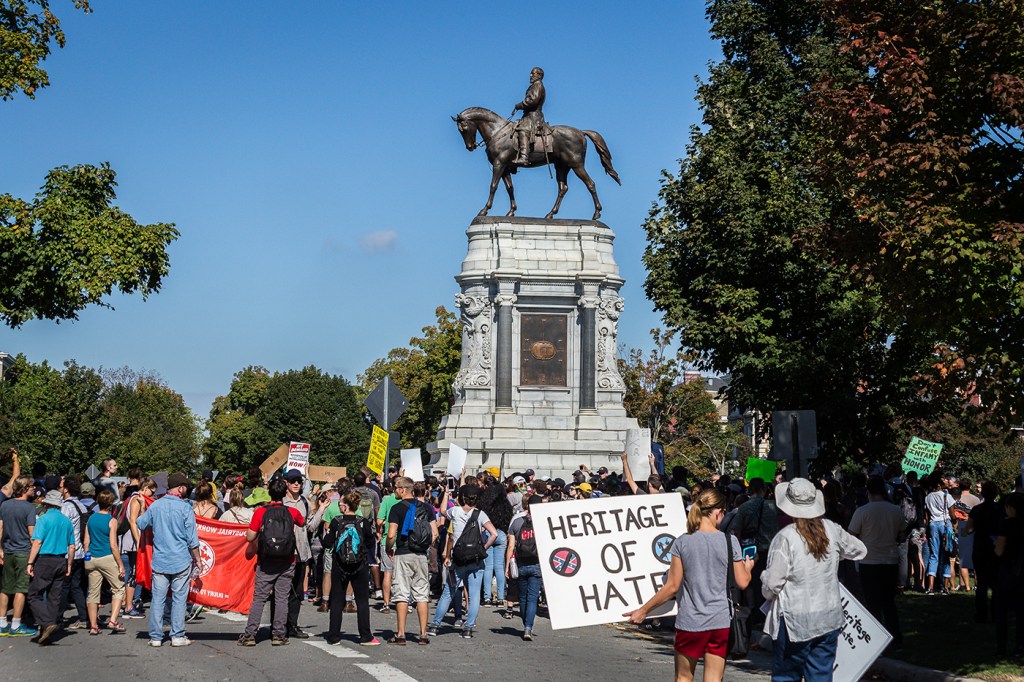How can journalism ‘move the conversation forward’ on race?

In the wake of racially charged rallies like the one in Charlottesville, Virginia last month, and as cities take stock of their histories by way of statutes, landmarks, and street names such as Yawkey Way in Boston, Northeastern’s School of Journalism hosted a media gut-check to examine how journalists should be covering these events. The consensus? There are no easy answers.
A standing-room-only crowd in Dockser Hall participated in the conversation, which was facilitated by School of Journalism director Jonathan Kaufman, associate professor of journalism Charles Fountain, and University Distinguished Professor of Law Margaret Burnham.
The question we have to ask ourselves as journalists is, ‘Is there a way to write about this in a way that moves the conversation forward?’
Jonathan Kaufman
Director, Northeastern School of Journalism
The discussion’s guiding question was: What is the role of the media in this broader, national conversation on race? Other questions arose as part of that discussion: Should journalism seek to build bridges among different ideologies? How should an organization cover hateful speech? Does the media have a sense of morality? Should it?
Burnham asked, “What should the role of the media be in today’s world where we have a highly polarized, highly divided public around critical issues? Is it the role of the media to mend fences, to bring people together? If it is, does that conflict with the role of the media to be a truth-teller?”
According to the experts, there isn’t one right answer. But perhaps a place to start is within. “A big part of this is that newsrooms are less diverse than ever,” Kaufman said. The Columbia Journalism Review reported last month that some of the nation’s biggest newsrooms are still mostly white, 50 years after vowing to include more diverse voices.
“The reluctance to engage on these issues sometimes reflects a fear of white reporters and editors—it’s a third rail they’re afraid to touch. But white reporters need to stand up for this,” Kaufman said.
From a local perspective, the panelists noted that Boston needs to reckon with its own racial history. Fountain noted the myriad streets, plazas, monuments, buildings, and more named after figures with problematic histories. Indeed, he pointed out, even Massachusetts’ founder, John Winthrop, was a slave owner.
“If we begin to cleanse our history and start with Yawkey Way, we have to recognize we have a lot of work to do beyond that,” he said, adding that he was supportive of beginning the process to rename the street and other landmarks.
Kaufman recalled his early days at The Boston Globe in the 1980s, just after Boston “went through its desegregation crisis.” He remembered talking to his peers about how to tell stories about race—then a topic constantly in the press—in a new way. He and a team of reporters decided to zoom out and examine the systemic, institutional barriers to equality, starting with job discrimination. It was coverage that earned his reporting team a Pulitzer Prize.
“A lot of people read past the jump on that story,” Kaufman said, using an industry term for the portion of a story that continues beyond the front page. “It was just a matter of looking at things from a different angle. But there’s no question about the moral import of this. And I worry that issues like Yawkey Way or the monuments elsewhere can be distracting from these larger issues. The question we have to ask ourselves as journalists is, ‘Is there a way to write about this in a way that moves the conversation forward?’”
Burnham also noted that focusing solely on monuments and street names fails to acknowledge the bigger picture. “Monuments are simply stone opportunities for us to talk about a whole bunch of other things that are important,” she said. “They give us a point of entry into a deeper, more critical conversation we need to have in this country—how to handle the increasing presence of racism and increasing effect of racial hostilities on our body politick.”




